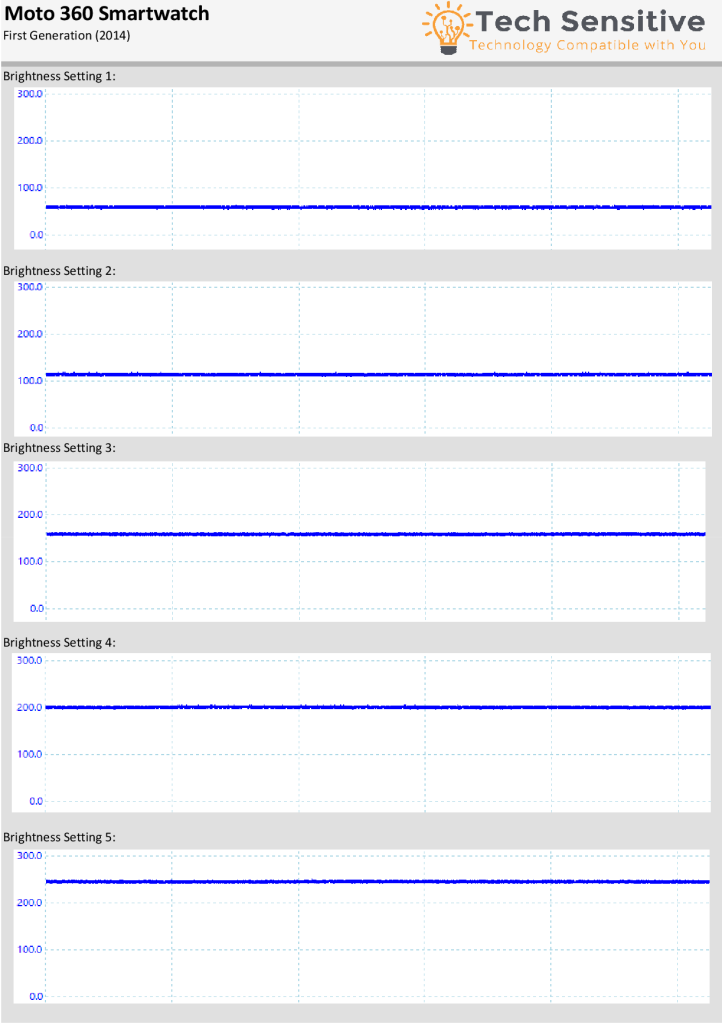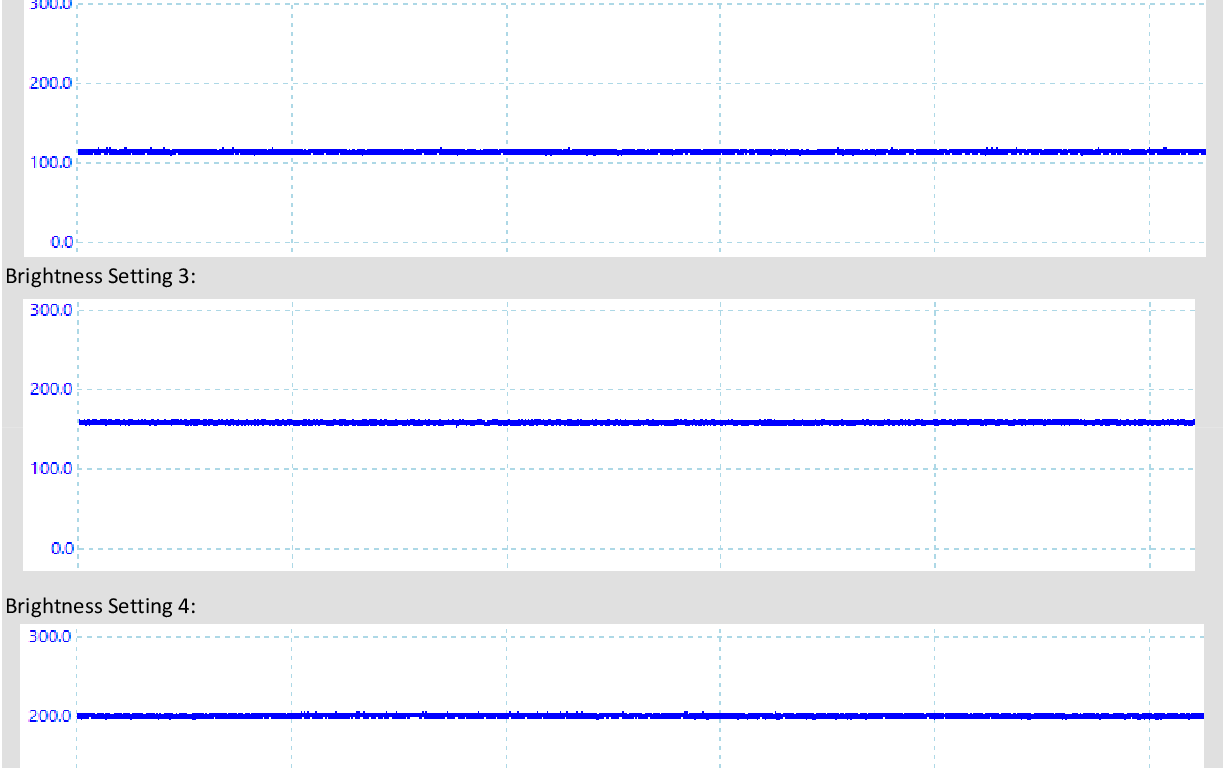Release in September 2014, the Moto 360 is Motorola’s first generation smartwatch. It sports are relatively small 40mm (1.5 inches) screen that given its size is unlikely to contribute much to symptoms of those most sensitive. Regardless, we decided to investigate.
FLICKER
We discovered no measurable flicker across the entire brightness range of the Moto 360.
Below is the screen output between at screen brightness settings “1” through “5”.

COLOR SPECTRUM OUTPUT
Coming soon.
LUMINANCE
Coming soon.
POLARITY
You may think of light as photons traveling in the shape of waves, but unlike waves in an ocean, photons can oscillate in all directions. Polarized glasses typically only allow passage of photons if the photons oscillate vertically. The further the orientation of the photons deviates from vertical, the less chance the photon will be able to pass through polarized lenses resulting in a dimmed image.
While natural light consists of photons oscillating in all orientations, photons emitted from electronics have typically already passed through polarizing filters that convert oscillations to a single unified orientation. Therefore, for those reliant on polarized glasses it’s important to consider whether the device screen will be visible when wearing polarized glasses. Alternatively, some may use this as a tool to reduce screen brightness beyond what the device is capable of.
Compatibility with Reference Maui Jim Sunglasses:
Good light visibility at all angles.
FINAL THOUGHTS
First generation devices are often rough around the edges in design, but the Moto 360 (2014) surprises us with respect to the absence of flicker and polarized light output. While the watch is unlikely to contribute to symptoms for those most sensitive, it’s been since surpassed by second generation models offering more functionality.
